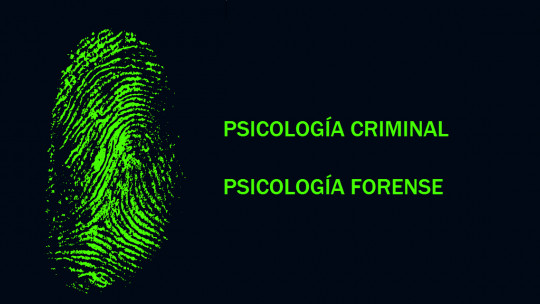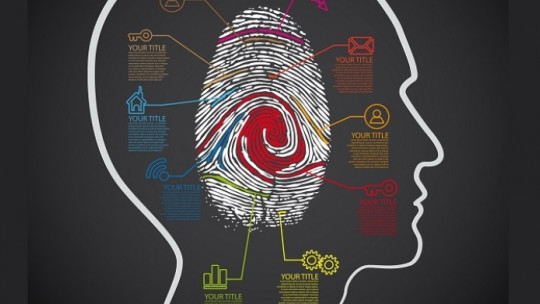The human brain is something so complex and (almost) perfect that since the time of Hippocrates it has been a source of curiosity. With the advancement of science and technology, neuroscience has little by little been solving the enigmas of the wonderful human brain, trying to explain the reasons for human behavior, including phenomena as complex as crime.
Why does a man commit a crime? What causes motivate you to break the rules? Why doesn’t the idea of being punished by the law frighten you? As we shared with you in a recent article, criminology is the science that aims to answer the above questions with antisocial behavior as its object of study, which is behavior that harms and goes against the common good. But to study crime and antisocial behavior, Criminology is based on various sciences and disciplines, among which the aforementioned neurosciences stand out
Studies into the brains of criminals
One of the most famous cases that have been the subject of study of neurology focused on criminological purposes, and that challenged concepts such as free will of the criminal and concepts such as fraud and the blame dates back to 2003. In that year, A 40-year-old man who had never previously presented sexual behavioral disorders was sentenced for sexual harassment of minors
The biological causes of antisocial behavior
A brain MRI on the subject showed a hemangiopericytoma in the orbitofrontal region which, after being removed, caused the pedophilic symptoms to disappear, for which he was granted freedom. It was not until a year later that the fixation on minors began to be born again. After doing a new MRI, it was observed that the tumor had appeared again and once again, after undergoing surgery, the symptoms disappeared.
More studies linking brain dysfunctions to antisocial personality disorder
Research that has been the subject of debate led by the North American Neuroscience Society they suggest that There are deficits in specific structures of the brain that include areas related to empathy, fear of punishment and ethics among those who manifest antisocial personality disorder.
Similar studies have been presented by Adrian Rayne, a neuroscientist at the University of Pennsylvania. This professor carried out an interesting study with 792 murderers with antisocial personality disorder, discovering that their prefrontal cortex was significantly smaller in size compared to another group that did not have antisocial disorder As if this compliment were not enough, it was also discovered that these individuals tend to present damage to brain structures linked to the ability to make moral judgments. These regions were the amygdala and the angular gyrus.
Endocrinology to the aid of criminology
Criminology has become increasingly interested in How endocrine glands are related to criminal behavior For example: we know that in a dangerous situation we can react by paralyzing, fleeing or attacking. From the first option we know that it is the cortisol mainly responsible for transmitting this stress response, however in relation to the last two it is the adrenalin the one in charge of preparing the body for these reactions.
It is known with certainty that if an individual has some dysfunction (for example, as a result of trauma) that leads to an increased production of adrenaline by the individual’s adrenal glands, The subject will have a special tendency to engage in aggressive behavior, such as violent crimes and crimes against physical integrity Regarding sexual crime, other studies carried out in the United States have proven that prisoners who committed violent sexual crimes show high levels of testosterone in their bodies in relation to the rest of the prison population.
Eynseck and the arousal theory of psychological types
Hans Eynseck Maintains that The nervous system of extroverts and introverts tends to one of two fundamental characteristics : excitation and inhibition stating that the so-called extroverts are predisposed to inhibition while introverts to excitation, which is why the activities between each type are usually compensatory to their predisposition to stimuli.
For example, being a more easily excitable introvert, You will tend to look for less pressing stimuli and therefore more calm and solitary activities ; while the extrovert will need to seek stimulation given his natural inhibition. In his theory he establishes that extroverts are more inclined to criminality as they are frequently in search of exciting stimuli, however when an introvert takes the step to act he can commit more serious crimes. In addition to noticing a tendency of the extrovert towards sadism and psychopathy while the introvert tends towards masochism and autism.
Are criminals born or made?
Faced with the eternal debate between sociologists, psychologists, biologists among other specialists in human behavior, criminology has chosen to resolve this issue under the resolution that The criminal is a product of both the predisposition of his psychophysiological, genetic and individual characteristics and the interaction between the social environment, anomie, culture, education, among others
Therefore, to say that a certain neurobiological damage was the definitive cause of the commission of a crime would be not only concise but also inconclusive, since the subject needs a wide range of factors to complete the crime , in addition to opportunity, mobile phones, etc. It is the job of criminology to detect how much “force” a crimino-impelling neurological factor presents to have been the cause of the crime, in joint work with the neurosciences that day by day gradually reveal the secrets of the nervous system and the human brain.









